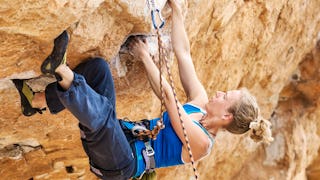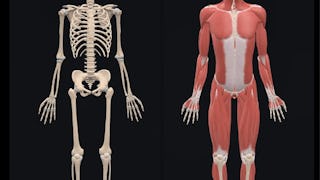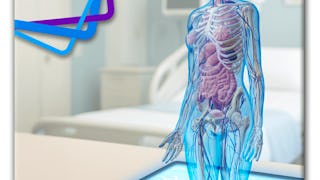This course provides a comprehensive understanding of the skeletal and muscular systems, exploring how bones, joints, and muscles support movement and stability.


The Framework of Movement: Understanding Bones and Muscles
This course is part of Interactive 3D Anatomy & Physiology: A Gamified Experience Specialization



Instructors: Hilary Gupte
Access provided by Coursera Learning Team
Recommended experience
What you'll learn
Learners will understand the structure and function of bones, joints, and muscles
Learners will explore the processes of bone growth, remodeling, and muscle contraction
Learners will apply musculoskeletal knowledge to case studies, such as fractures and arthritis
Details to know

Add to your LinkedIn profile
19 assignments
March 2025
See how employees at top companies are mastering in-demand skills

Build your subject-matter expertise
- Learn new concepts from industry experts
- Gain a foundational understanding of a subject or tool
- Develop job-relevant skills with hands-on projects
- Earn a shareable career certificate


Earn a career certificate
Add this credential to your LinkedIn profile, resume, or CV
Share it on social media and in your performance review

There are 4 modules in this course
This lesson explores the structure and function of the human skeleton, focusing on its role in providing support, protection, and enabling movement. Learners will gain an understanding of the skeleton’s two main divisions, the axial and appendicular skeletons, along with the specific roles of the skull, rib cage, vertebral column, and limb bones. The vertebral column's structure and function will also be discussed, highlighting its contribution to flexibility, stability, and protection of the spinal cord. This foundational knowledge will set the stage for understanding how the skeletal system interacts with other body systems.
What's included
6 videos2 readings6 assignments
This lesson introduces the types of joints and their role in movement and stability, the process of bone growth and remodeling, and the mechanisms of muscle contraction. Learners will gain an integrated understanding of how these elements work together to facilitate body movement and maintain skeletal health.
What's included
4 videos1 reading4 assignments
This lesson provides foundational knowledge of muscle types and their unique roles, along with an understanding of the major muscle groups of the upper and lower limbs and their importance in everyday activities.
What's included
10 videos4 readings9 assignments
This lesson explores common disorders that affect the bones, joints, and muscles, demonstrating their impact on mobility, strength, and overall health. Through real-world case studies, learners will examine skeletal disorders like osteoporosis, osteoarthritis, and rheumatoid arthritis, as well as muscle conditions such as muscular dystrophy and acute injuries like sprains. By understanding their causes, symptoms, diagnostic tools, and management strategies, learners will connect theoretical concepts to practical applications, reinforcing the importance of musculoskeletal health.
What's included
5 videos
Offered by
Why people choose Coursera for their career




Recommended if you're interested in Health

MedCerts

Rice University

The Chinese University of Hong Kong

Open new doors with Coursera Plus
Unlimited access to 10,000+ world-class courses, hands-on projects, and job-ready certificate programs - all included in your subscription
Advance your career with an online degree
Earn a degree from world-class universities - 100% online
Join over 3,400 global companies that choose Coursera for Business
Upskill your employees to excel in the digital economy


